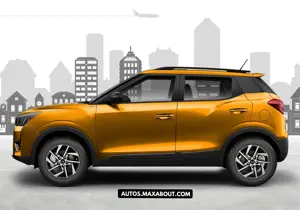Mahindra Logan (2009) Updates
Latest Updates
Friday, 04 June 2010 09:39 AM
In an effort to boost sales, Mahindra & Mahindra resorted to a price cut of up to Rs 80,000 in April 2010, after parting ways with Renault. This move led to a slight increase in sales, with 450 units sold in May 2010 compared to 427 units in the same month the previous year. However, this was still far below the initial sales targets.
Friday, 04 June 2010 03:32 PM
The joint venture between Mahindra & Mahindra and Renault faced internal disagreements, particularly over reducing the size of the Logan to avail duty benefits. Renault was against downsizing the car, which contributed to the strained relationship between the partners. This disagreement ultimately led to the separation of the joint venture.
Wednesday, 31 March 2010 05:50 PM
Despite its global success, the Logan failed to make a significant impact in the Indian market. By the end of the 2009-10 financial year, the Logans sales had dwindled to just 5,332 units from 13,423 in the previous year. This decline highlighted the need for a more tailored approach to the Indian market. I think understanding local preferences better could have helped.
Tuesday, 10 November 2009 11:50 AM
In November 2009, Renaults CEO Carlos Ghosn expressed the need for patience and determination to revive the Mahindra-Renault Logan in India. Despite initial targets of 30,000 cars a year, the Logan was selling only about 500 units per month, with sales dropping to 401 in October, a 68% decline from the previous year. The joint venture posted a significant loss of Rs 490 crore in the year ending March 31, 2009. I believe the pricing and localization issues were critical factors in this decline.
Tuesday, 10 November 2009 12:18 PM
The Logans failure to meet sales targets was also attributed to the higher excise duty it faced due to its length. Competitors like Tata Motors had modified their cars to be under 4 meters long to benefit from lower excise duties, making their cars more affordable. This regulatory disadvantage further hampered the Logans sales.
Thursday, 04 June 2009 06:45 PM
By June 2009, the Mahindra-Renault Logans sales continued to be sluggish. The cars dated looks and its widespread use as a tourist taxi in urban areas had negatively impacted its image. Additionally, the uncertainty surrounding the future of the joint venture created doubts among potential buyers. The festive season failed to boost sales, with a 71% year-on-year drop in September.
Sunday, 15 March 2009 02:01 PM
In March 2009, the Mahindra-Renault joint venture was facing significant challenges. The Logans high price point, partly due to low localization of parts (only 50% sourced locally), made it less competitive against models like the Maruti Swift Dzire and Tata Indigo CS. The dual structure excise duty also hurt sales, as smaller cars enjoyed lower duties. I think addressing these pricing and tax issues could have made a big difference.
Tuesday, 15 July 2008 10:40 PM
In July 2008, Mahindra-Renault launched the Limited Edition-Logan Edge, which received a positive response. This special edition was part of the efforts to boost sales and revamp the image of the Logan in the Indian market. However, overall sales figures remained disappointing.
Wednesday, 04 April 2007 04:43 PM
By April 2007, the Mahindra-Renault Logan was launched in India with high expectations. The car was praised for its spaciousness, performance, and technology, including the latest generation dCi common rail engine. It was available in both petrol and diesel versions and was designed to suit Indian driving conditions. Despite these features, the Logan struggled to gain traction in the market. I believe the initial pricing strategy was a major misstep.
Wednesday, 04 April 2007 07:19 AM
The Mahindra-Renault Logan was produced at Mahindras upgraded plant in Nashik, with an annual production capacity of 50,000 units. The car was launched in several major cities across India and was available in six different colors. However, the production capacity far exceeded the actual sales figures, indicating a significant mismatch between supply and demand.
Most Popular Cars
Based on Cars Popular on Maxabout
Mahindra XUV300 W4 TurboSport
₹ 9,30,500
1092 Views
Hyundai i20 N Line N6 DCT Dual Tone
₹ 11,33,800
783 Views
Hyundai Venue N Line N8 DCT
₹ 13,81,800
842 Views Recently Added Cars
New Cars Added On Maxabout
VinFast VF7 Sky Infinity
₹ 25,49,000
457 Views
VinFast VF7 Sky
₹ 24,99,000
433 Views
VinFast VF7 Wind Infinity
₹ 23,99,000
456 Views Upcoming Cars
Exciting Upcoming Cars
Maruti Swift Hybrid
₹ 10,00,000
1582 Views
Renault Boreal Bigster SUV
₹ 13,00,000
1652 Views
Leapmotor T03
₹ 8,00,000
1168 Views 





